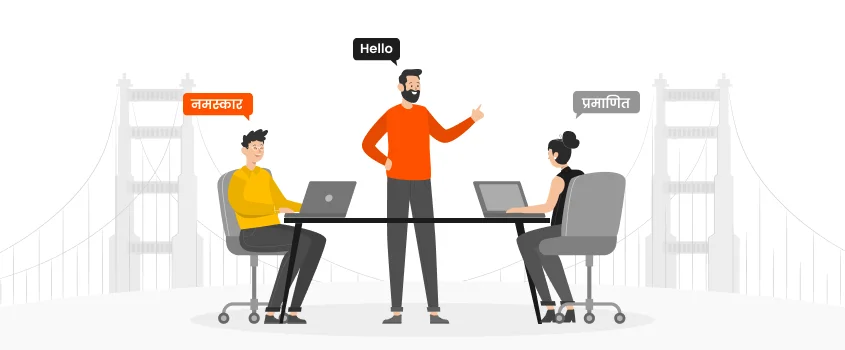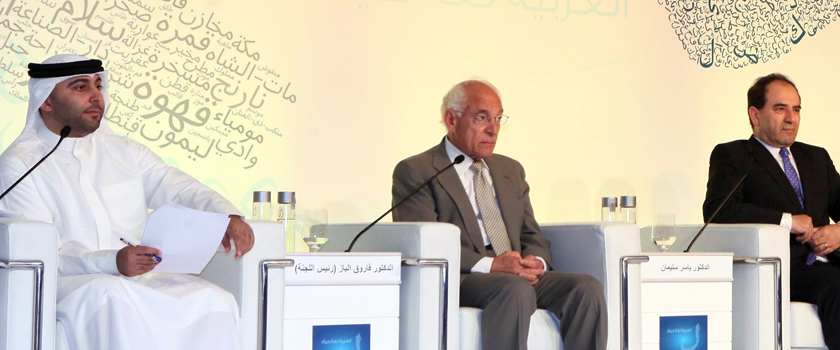2025 Offer Request a Quote Today and Grab a $50 Coupon for Free!
It is the act of adjusting an item’s significance to a different area, which includes translation, imagery, and cultural elements that impact how your content is seen.
Localization is about creating a website that feels like it was created with the user in mind. Content that is fully localized appeals to users because it incorporates cultural nuance to make them feel at home instead of simply substituting English words with translations.
Introducing new products into an international market usually requires translating and Localization. Translation converts content that is in one language to another. The process goes beyond changing content and marketing materials into a different language.
Localization is crucial in the way it creates a relationship with potential customers on a personal level. This is because Localization involves knowing how cultural and market conditions impact customers’ buying habits and not assuming that you’ll be successful in your chosen market. After all, you’re there. Localization aims to adjust meaning to the appropriate information for a specific need. Apart from changing the language, Localization could include different images and changes to new measurement systems and time zones.
Moreover, currencies and different layouts adapt to language changes (for instance, if the language is read from left to right or words in the target language are more lengthy than the language of origin).
Sound Localization is taking audio content, mainly when it is recorded and transmitted or reproduced, and changing it for a specific location or market. Localization of audio often incorporates a language translation as a component of this process.
Your training materials are designed in English. This is perfect for a customer base that is English and employees. But what happens to customers and employees who speak other languages?
One of the advantages of localized e-Learning courses is the improvement in learning and retention levels. This, in turn, will result in happier customers and employees.
A study reveals radio is a medium-sized reach for Hispanic customers. These consumers are also big shoppers in several significant categories of retail. One of the most effective ways to reach these consumers is through radio commercials produced in Spanish.
What Is The Place Where Localization Comes In?
Spanish users in California, Texas, New England, and Puerto Rico will require a distinct marketing strategy. The audio content you create must be adapted to the specific markets you want to target.
Localization of software is the method of adapting software to the culture and the language of the final user, from the standards for measurement to videos and graphics. It’s not just translating. However, it also involves design and UX modifications to make the software appear and feel more natural for the user.
It’s easy to think that software localization changes the language used in a specific section to let users know what buttons to click. But, in reality, software that is localized does more than this. It involves modifications to things such as the size and the position of these buttons on the webpage, along with various design aspects. This could also include updating the backend code to ensure that employees from different areas can manage and modify the software.
Imagine a program that needs to be translated from English to Chinese. Simple translations may result in text and guidelines that seem easy enough, but they could have significant usability issues. The font could be too small for you to read clearly or might not support Chinese characters. And the text’s length could be reduced to the point where the page’s visual elements look strange.
It’s not even taking into account the preference of Chinese people. For instance, they may require more information on each page or have a different layout. If you think about all these issues, it’s simple to recognize the importance of software locales as a much more significant, more complex, and more crucial point than at first glance.
In essence, testing localization is a method to test the behavior of software, its accuracy, and its ability to be used in specific places and regions. It could range from a particular city to a whole country. The test aims to determine the way the software behaves in different environments.
Testing for Localization is intended to evaluate the operation of software globally to offer an understanding of linguistic and cultural relevance to different regions around the globe. It’s designed to modify an app or website depending on the target language preference, the area, the user’s preferences, and region-based regulations (country or state).
The localization test examines the functions, UI, content, and usability of software available in various places. It goes beyond ensuring the application works as it should. It’s designed to deliver users a personalized experience by making features and services for users depending on their location and what they would like to see.
Localizing an app is altering and improving an application to make it more appealing to a specific geographic market. It is vital to ensure that the application is attractive and user-friendly outside of the country where your headquarters are located as it is inside.
Although translating the language used in your App is a significant part of the process, there are other rules of culture and preferences that are harder to define. Certain gestures or symbols might appear harmless to people in America. However, certain gestures or signs may be acceptable in the U.S. but could cause many offenses in a different country. Whatever the case, these could play a significant role in your App’s popularity internationally.
App localization allows your App to be adapted to the needs of people who are fluent in other languages so that everything from measurement and units to currencies and idiomatic phrases is optimized to meet the needs of these users.
If you ensure that your App appeals to users in many countries worldwide, you create an incredible possibility for growth that couldn’t have ever been achieved in only one country.
Localization of data is the process of the practice of storing and processing data within the exact location where you initially acquired it. Specific regulations require it for data localization, such as those in the EU General Data Protection Regulation (GDPR) and Brazil’s General Data Protection Law (LGPD), and several others (E.g., China, Russia, and India).
Data localization pinpoints the exact geographic location(s) of the place where you cannot save and process your data.
Localization of data laws are typically in conjunction with other laws, for example,
The fundamental principle of translation is that it transforms text. On the other hand, Localization changes the whole material or information from one to the next. The possibilities of Localization are unlimited and extend far beyond the scope of translation.
Translation is a crucial aspect of Localization, but much more is needed to ensure that content is authentic and localized.
How Do You Create The Most Delightful Global Experiences?
The exciting thing about Localization is that you won’t notice it if it’s executed correctly. It makes you feel like an application, program, or mobile App was created specifically to meet your specific needs and preferences and not as a generic experience designed to be universally fitting.
Personalized content is the basis of all that Spotify provides. Spotify wants users to sign up to Spotify and discover something suitable for them.
The first step to making their experience more accessible to more people is to translate the text into the language of their choice. Consider this an example of a playlist titled “Songs to sing during the shower.”
They take a deep look at the content of their cultural spotlight and showcase traditional Thai music from Thailand and South Africa, celebrate South African Freedom Day, and celebrate Diwali in India.
To provide a full-immersive sensation, Spotify has also modified its recommendations engine, allowing for localized music recommendations.
Users could find out the music most popular in particular cities or regions.
But Spotify doesn’t just rely on localized content within their application. They also make use of hyper-localized marketing and advertising to attract potential customers.
The ads focus on unique experiences specific to certain areas or cities. These ads entice prospective Spotify customers, which makes them feel acknowledged and recognized, and promote Spotify as an aid to navigating these daily problems.
The localization strategy is how an organization adapts its message to a specific culture or language. If you are entering a new market, it is essential to have locally accessible websites, social media marketing campaigns, and more. Your localization strategy should be able to adjust any changes that are needed in the tone, images, and subjects to reach out to the local market effectively.
You already realize that Localization is essential to moving to a global market. So, with that in mind, what are the best times to think about the possibility of localizing your brand’s information and experience?
The most successful multinational companies take into account global Localization as the first step in their globalization journey. If you’re contemplating expanding internationally, you should consider how to do it most effectively and efficiently.
In this article, we gave a complete overview of Localization and how it is different from simple translation. Although we live in a globalized world, companies aim to create products or services that cater to specific locales. And that is where the future lies.

Turkey, the country straddling eastern Europe and western Asia is one of the most advanced and rapidly developing countries of
Read more
Mumbai (formerly known as Bombay) is the largest city of India and a cosmopolitan metropolis. Located on India’s west coast,
Read more
Mars Translation believes in bringing the best side of your business forward and that is why we have multiple international
Read more
Mars Translation provides one of a kind professional Danish translation services all over the world. All of Mars Translation’s translators
Read more
Mars Translation believes in bringing the best side of your business forward and that is why we have multiple international
Read more
Informed consent is the process by which doctors provide necessary medical information to their patients so that they can agree
Read more
Pune, also known as Puna, is the second largest city in the west-central Indian state of Maharashtra. It is the
Read more
Do you have a birth certificate in another language that needs to be translated into Russian language? If so, we
Read more
Recognizing an employee award is entirely convenient. It is both a formal and an informal acknowledgement of an employer’s effort,
Read more

